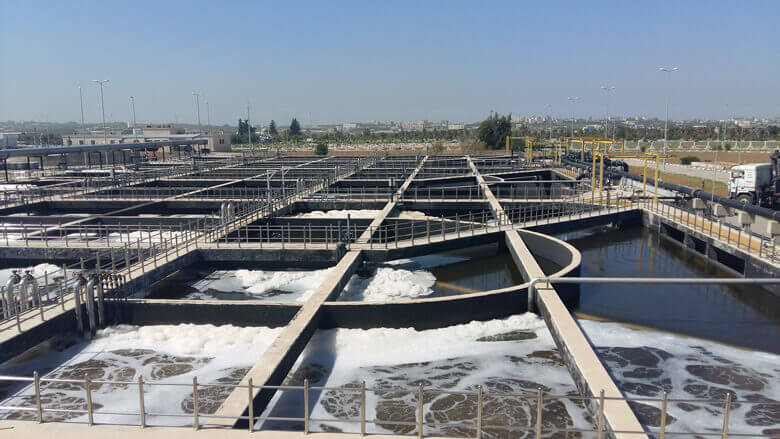SEWAGE TREATMENT

Any activity, whether domestic or industrial, generates wastewater or effluent that contains unwanted pollutants that must be eliminated before that water is discharged to a natural receptor.
In general, conventional wastewater treatment consists of a combination of physical, chemical and biological processes, as well as operations for the removal of insoluble particles and dissolved contaminants. Different sources of water pollution can be found, usually distinguishing four categories:
- Runoff waters
- Domestic waters
- Waters from agricultural activities
- Industrial waters
The main objective of the preliminary treatment or pre-treatment is the removal of larger solids and other materials usually found in water. Operations typically involved include screening and removal of sand and gravel.
During the primary treatment, the removal of organic and inorganic solids is achieved through sedimentation processes, as well as using flotation mechanisms. Reductions of 25-50% of biological oxygen demand (BOD5), 50-70% of suspended solids and 65% of oil and fats are achieved.
The objective of the secondary treatment is the subsequent treatment of the effluent generated in the primary treatment to eliminate the organic compounds and residual suspended solids. In most cases, secondary treatment involves the removal of biodegradable organic matter and colloidal materials using aerobic biological treatments. These develop in the presence of oxygen by means of aerobic microorganisms (mainly bacteria) that metabolize the organic matter present in the wastewater, producing in turn more microorganisms and inorganic metabolic products (mainly CO2, NH3 and H2O).
The microorganisms must then be separated from the treated water by sedimentation to produce a clarified secondary effluent. Settling tanks used in secondary treatment are commonly referred to as “secondary clarifiers”. The biosolids removed during secondary sedimentation, also called “secondary sludge or biological sludge” are normally combined with those produced during the primary treatment and then go through a specific treatment process.
An adaptation of the activated sludge process is commonly used to remove nitrogenous compounds, these are the so-called “nitrification-denitrification” processes.
The tertiary treatments are used to treat specific components cannot be removed by conventional secondary treatment, or when the treated water wants reused in other processes. Commonly, tertiary treatments include disinfection, which in turn, is usually done by injecting a chlorine solution, although ozone or ultraviolet radiation can also be used. The bactericidal effects of chlorine and other disinfectants depend on the pH of the water, the contact time, the organic content and the temperature of the effluent.
On the other hand, the solid waste that is generated in sewage treatment plants, also known as sludge or sludge, must be treated as well. This sludge treatment can include a combination of thickening, digestion (where organic compounds are metabolized by anaerobic bacteria), and drying. The final destination of these sludge will normally be on the ground, either for agricultural use or for its value as a soil conditioner and fertilizer, although it can also be buried. It must be taken into account that in the case of industrial wastewater, the application of sludge in agriculture for human consumption is conditioned by the presence of toxic compounds and is not always possible.
It is important to note that the problems that can be encountered during wastewater treatment processes are complex, since effluents usually contain different pollutants depending on the origin of the wastewater, as has already been seen. In this way, each waste plant will be specifically designed for the treatment of the particular influent contamination.




